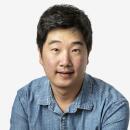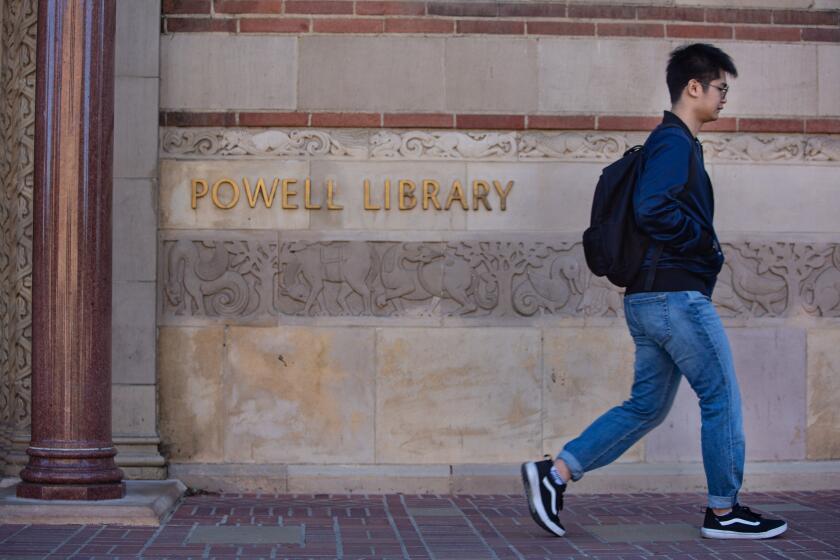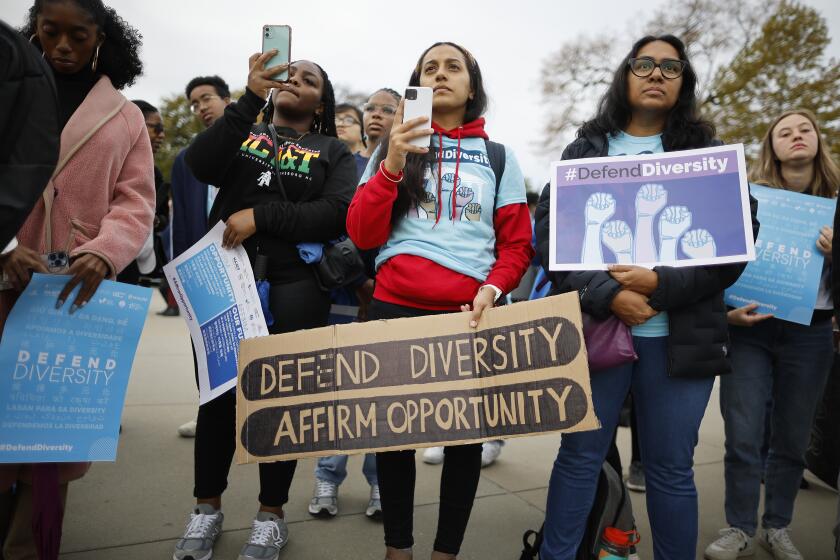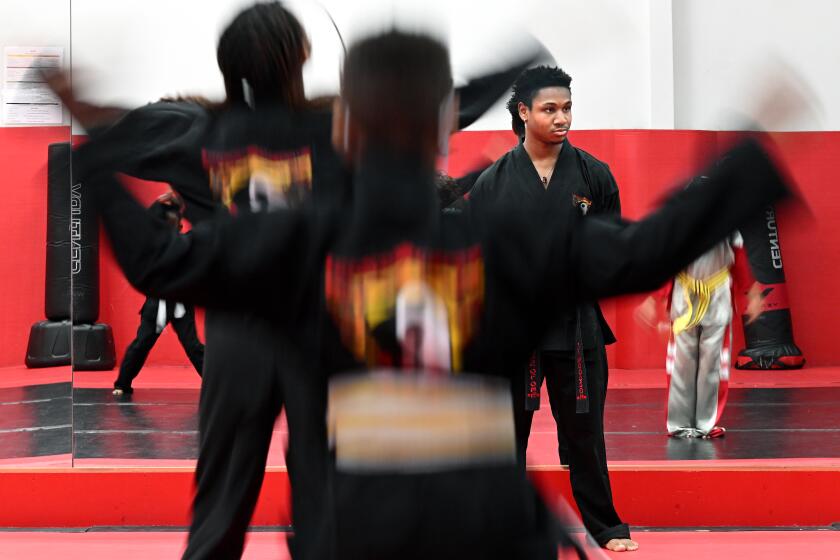The end of affirmative action won’t change much for them, some Asian Americans say
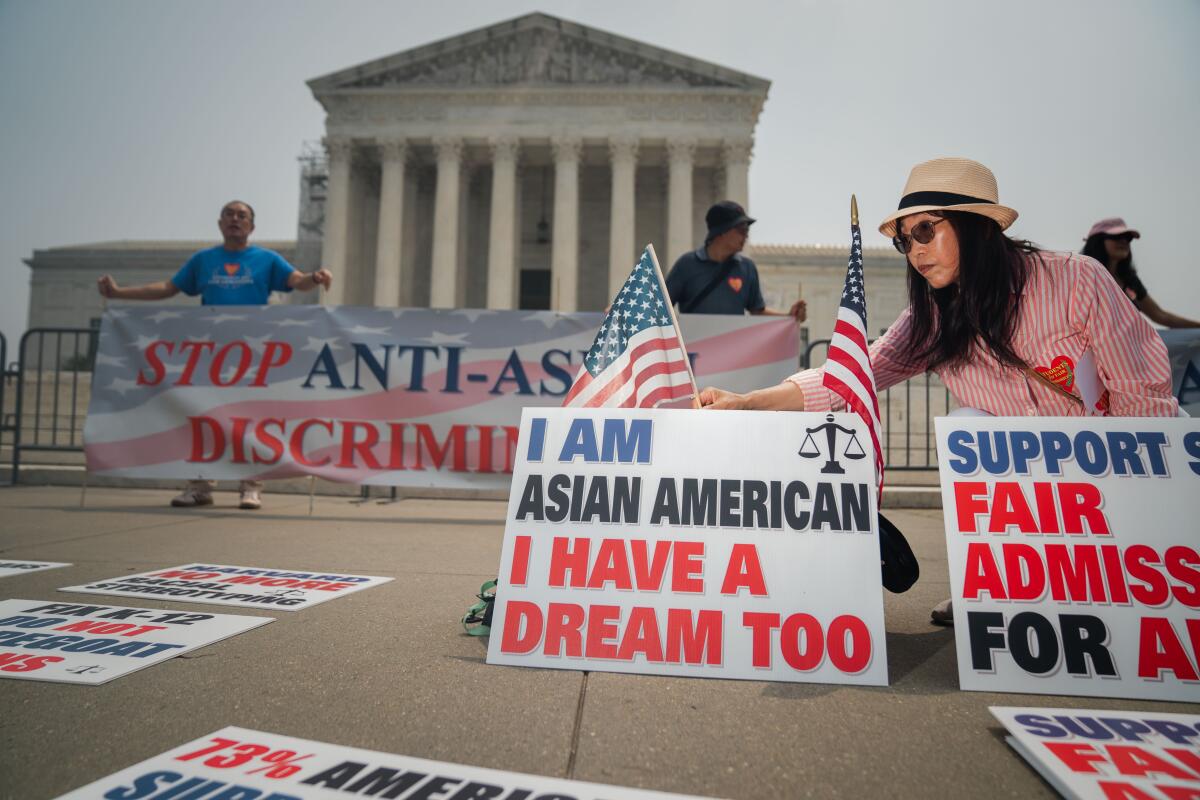
Cecilia Chang bluntly told her two kids: You have to try harder because of who you are.
She believed that admission to elite colleges was stacked against Asian Americans — “You’re competing for a very little number of seats with all these qualified Asian kids,” she said.
Still, she doesn’t think the U.S. Supreme Court’s ruling doing away with affirmative action will change much. She supports college officials trying to bring in students from “all walks of life,” and she thinks they will find a way to achieve the racial diversity they’re looking for.
“It doesn’t mean s— to us,” said Chang, who runs a disability-related nonprofit and came to the U.S. from South Korea when she was 13. “I don’t think it’s going to tilt in any one way or the other.”
Chang’s children, who attended public schools in Fullerton and Santa Ana, did well, despite their mother’s warning. Her son is a rising junior at Claremont McKenna studying math. Her daughter, an aspiring lawyer, will attend Williams this fall.
Whether affirmative action discriminates against Asian American students was at the heart of the lawsuits that prompted the ruling.
But like Chang, some Asian Americans believe college officials will find ways to get around the ban and ensure they admit enough underrepresented students, including those in the Black and Latino communities.
Affirmative action was only in play at a small number of selective schools. But many Asian immigrant parents and their children aspire to those schools — particularly those from countries where college admission is based on a single high-stakes exam and a name-brand school is a be all and end all.
The odds of getting in are so low, with Harvard’s 2023 admissions rate at less than 4%, that some say it’s an impossible goal made no easier by the abandoning of racial preferences. The lifting of standardized testing requirements for many colleges means that admissions are even less predictable and harder to ensure just by studying hard.
Colleges “want diverse classes, and they will get it,” said Janice Kim, 56, a Korean American who lives in Las Vegas and whose daughter will be a sophomore in high school. “If your last name is Kim, how are you going to hide that?”
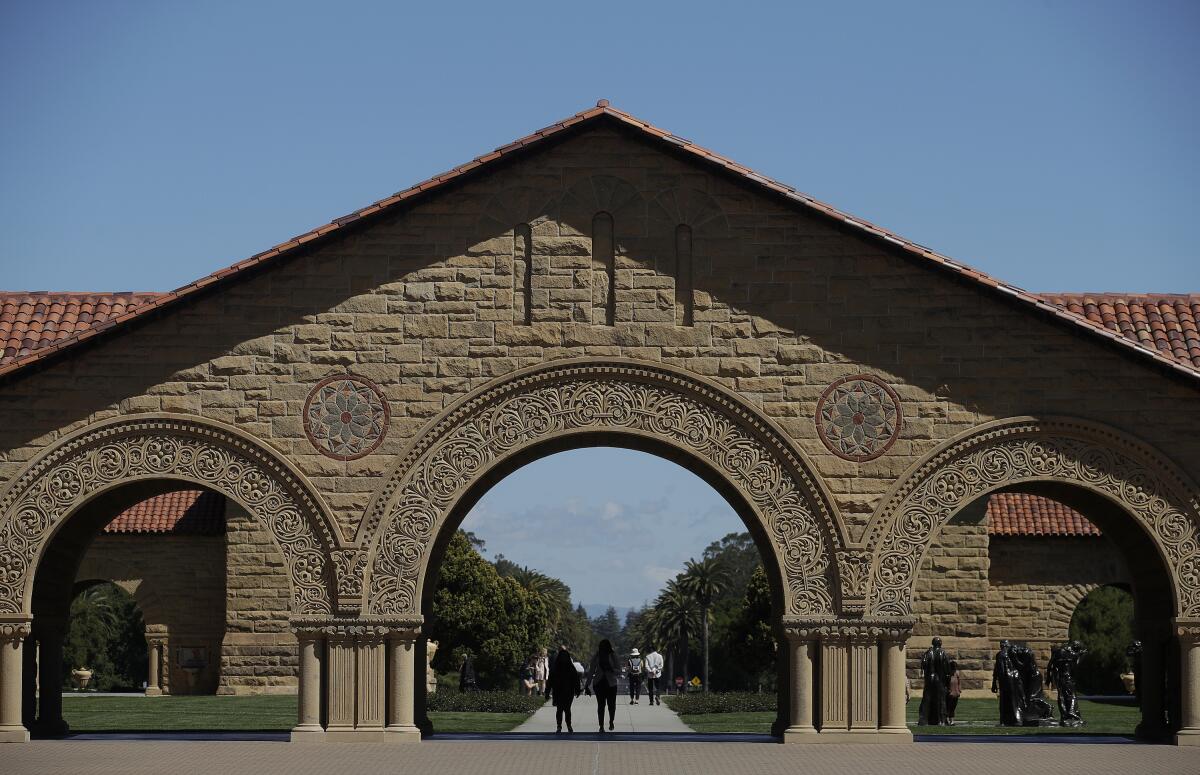
In California after the passage of Prop. 209, which outlawed affirmative action at public universities, the number of Black and Latino students plunged at the UC’s most competitive campuses, including UCLA. Asian American enrollment held steady.
In fall 2022, UC admitted Asian Americans at the highest rate among all first-year California applicants: about 73% compared with 63% for Latinos, 57% for whites and 56% for Black students.
But Asian American California residents who earned admission into the first-year fall 2020 class had higher SAT test scores than most other groups. Students of Chinese descent, for instance, had test scores more than 250 points higher than those of Latino and Black students and 80 points higher than white students’ scores.
Such data fuel perceptions among many Asian Americans that they have to work harder to get the same chances. Some high school students agonize over whether to “check the box” on their college applications to indicate that they are Asian, fearing they will be at a disadvantage.
The U.S. Supreme Court hearings on affirmative action this week highlighted widespread fears among Asian Americans that they face bias in selective college admissions.
Tanya Anand, who is preparing to apply for colleges as a senior at a Los Angeles private school, which she declined to name for privacy reasons, said she values diversity on campuses and supports affirmative action as a way to level the playing field for future generations.
But she believes that colleges are trying to find students who are “a good fit” and that the Supreme Court ruling won’t change that.
Admission to a highly selective college like Harvard is a hopeless crapshoot, and the lack of a standardized testing requirement has turned the application process into a “super gray area,” she said.
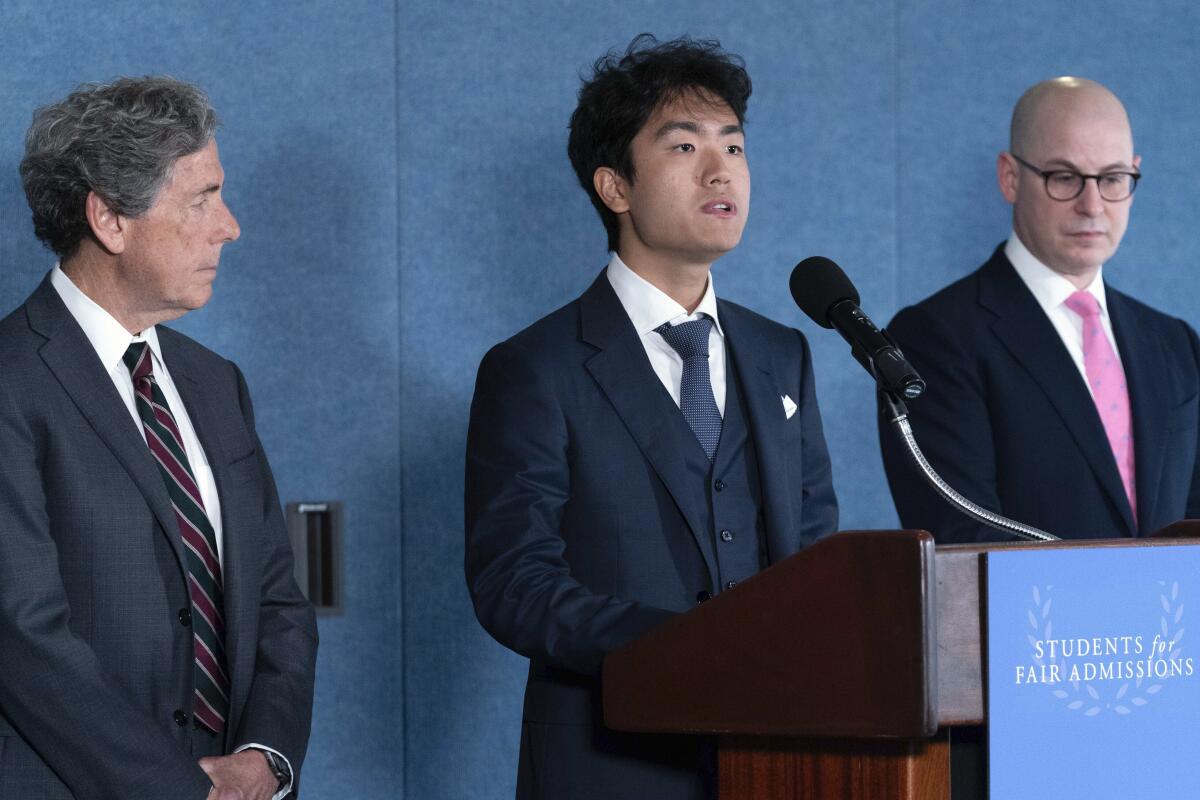
“I don’t know what I need to submit, what’s optional,” said Anand, who is Indian American. “The college process is so unclear in how it works and what doesn’t.”
Heather Brown, a counselor at Hollywood High School, said she’s concerned that the end of affirmation action could make a bad situation even worse for those Latino, Black and other underrepresented students with fewer resources.
Her Asian American students will continue to fare well, since many have parents willing and able to pay for private college counselors, tutoring and SAT prep classes, she said.
Sally Chen of Chinese for Affirmative Action, who wrote an opinion piece for The Times last year arguing that affirmative action helped her get into Harvard as the daughter of low-wage Chinese immigrants, said that many Asian American parents will still want their children to attend schools that “are and will continue to be highly exclusive.”
After the Supreme Court decision was released Thursday, Chen said she hopes the discussion will continue about “how our current system is failing so many students.” There is a “real deep sense of sadness” about how the decision treats college admission as a zero-sum game, said Chen, who is the organization’s education equity policy director.
“A lot needs to be done to challenge the idea of meritocracy, the idea of hyper-competition and making sure to prioritize, at the end of the day, a student as a whole person,” she said.
The decision ignores the tremendous diversity among Asian Americans, said Sissy Trinh, executive director of the Southeast Asian Community Alliance.
Southeast Asian Americans, who enroll in college at much lower rates than East or South Asian Americans, could feel even more excluded from top schools. Trinh said that many of the high school students she works with are told by counselors not to bother applying.
“They’re not going to apply, because they feel like it’s not for them,” she said.
The idea that Asian Americans need higher SAT scores than others to get into Harvard is a fallacy based on a misreading of a study that didn’t look at other admissions factors.
Some Asian American high school students fear that with the end of affirmative action, they will attend colleges with less diverse student bodies.
Brielle “Yuuki” Lubin, who will be a senior at the same Los Angeles private school as Anand, worries that in college, he will miss out on diverse perspectives and backgrounds that would challenge his worldview.
Lubin, an aspiring filmmaker, also worries that if schools don’t consider race in admissions, they may not value his experiences as a half Japanese LGBTQ+ person.
That concern may be assuaged by Justice John Roberts’ majority opinion, which said that universities could “consider an applicant’s discussion of how race affected his or her life, be it through discrimination, inspiration, or otherwise,” as long as the applicant is “treated based on his or her experiences as an individual — not on the basis of race.”
Olivia Brandeis, a rising junior at a public high school in Danville in the Bay Area, is conflicted about affirmative action. She supported the policy because she wants to have classmates with diverse perspectives and backgrounds, but she feared it would be tougher for her to get into a good college.
But she is more concerned about other issues that she believes play a much bigger role: GPA inflation, students creating “fake” nonprofits to boost their resumes, children of alumni getting an unfair advantage.
The end of affirmative action won’t do much to remedy those issues, or the general randomness of college admissions, said Brandeis, who is half Indian and half white.
She also believes that colleges will continue to diversify their classes through recruitment programs and scholarships targeting people of color. Despite the perceived disadvantage of being Asian American, she may highlight her biracial background in her application essays.
“Diversifying their campus, whether it’s through the admissions process or through other initiatives, it helps them kind of stay at the top,” she said.
High school students stress one aspect of the “youth mental health crisis” is the pressure they feel to be perfect and successful so they can get into choice colleges.
At South Pasadena High School, which is 28% Asian American, rising junior Luke Wang calls himself a “mediocre” student, despite having a GPA of 3.5 and running cross country.
Wang, 15, who was adopted from Taiwan at age 2 and raised in a Taiwanese-Korean household, doesn’t think race should play a role in college admissions. He welcomed the Supreme Court ruling, citing “fairness.“
“You are what you’re worth,” Wang said. “If you’re smart enough and you get those grades, then I feel like you should have a place in college no matter what.”
He’s aiming for CSUs and UCs and doesn’t think he’ll apply to any Ivies. If he doesn’t get into a college of his choice, he won’t see it as a result of his race but an issue of his credentials and the extreme competitiveness of college applications.
“I guess I’m just not good enough,” he said.
His mother, Ann Wang, a children’s book author, said the ruling is a “big mistake.”
She worries it will help “the highest-performing Asians” at the cost of low-income Asians and recent immigrants.
“People come from different backgrounds, and we didn’t all start off in the same place, and we do need to help people who have had it harder,” said Wang, who was born in Korea and came to the U.S. as a young child.
Her older son Ian, who will be a senior at UC Berkeley this fall, said that when he applied to colleges, he tried to set himself apart from “the traditional Asian American student, who plays the violin and has good test scores and is good at math.”
He leaned on his interest in environmental science and the outdoors and his long list of extracurricular activities, including track, cross-country, jazz band and Boy Scouts.
“I feel like if I had a more racially neutral last name, I wouldn’t have checked Asian as a box,” he said. “I felt like it hurt my chances. But it’s Wang, so I was like, ‘I can’t do that.’”
Although Ian believes affirmative action is necessary, he doesn’t think the ruling will change much in the landscape of college applications.
“Part of me feels like people who are reading admissions are still thinking about race,” he said. “As long as humans are reading applications, I think people will have subconscious racial biases.”
And the demise of affirmative action won’t change the advice he gives his younger brother.
“Focus on what makes you unique and what you can offer to an institution,” he said. “If that means your racial identity … [or] what you’ve gotten out of a sport or an extracurricular. What makes you special and why they would want you.”
Times staff writer Teresa Watanabe contributed to this report.
More to Read
Sign up for Essential California
The most important California stories and recommendations in your inbox every morning.
You may occasionally receive promotional content from the Los Angeles Times.
